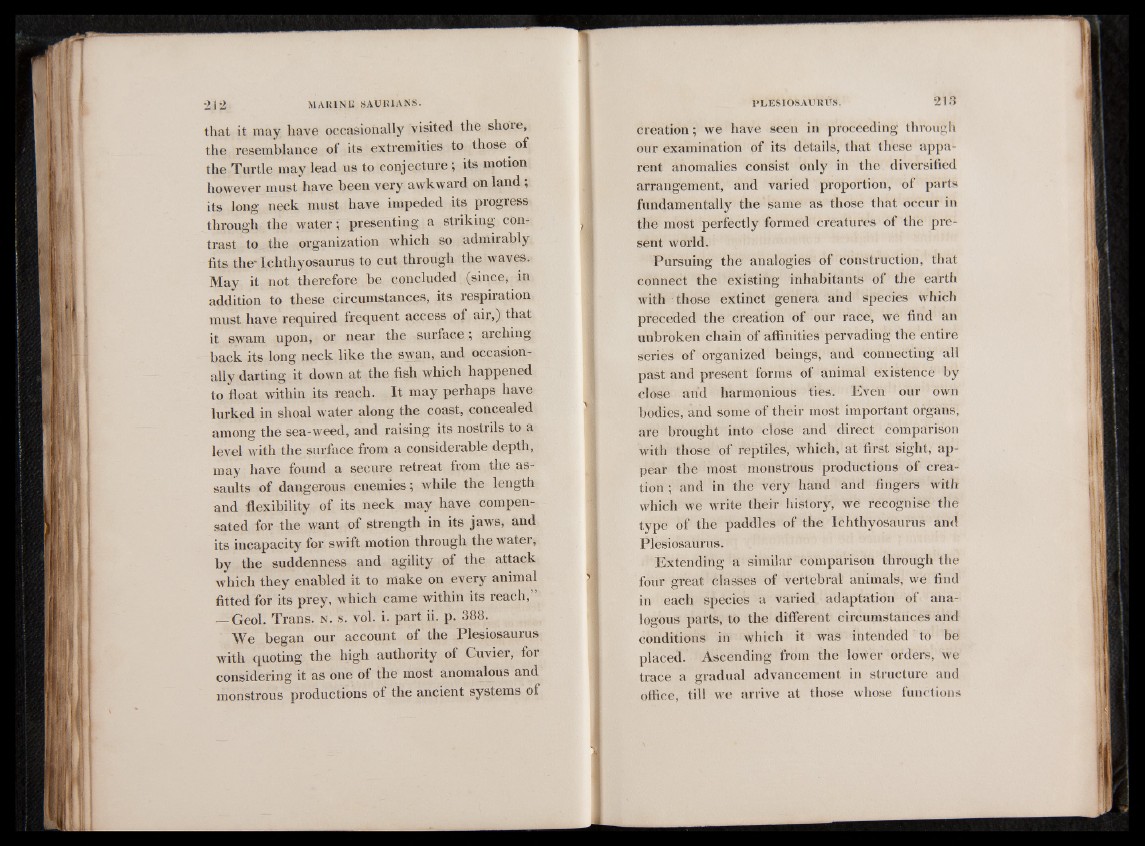
that it may have occasionally visited the shore,
the resemblance of its extremities to those of
the Turtle may lead us to conjecture; its motion
however must have been very awkward on land ;
its long neck must have impeded its progress
through the water; presenting a striking contrast
to the organization which so admirably
fits the- Ichthyosaurus to cut through the waves.
May it not therefore be concluded (since, in
addition to these circumstances, its respiration
must have required frequent access of air,) that
it swam upon, or near the surface; aiching
back its long neck like the swan, and occasionally
darting it down at the fish which happened
to float within its reach. It may perhaps have
lurked in shoal water along the coast, concealed
among the sea-weed, and raising its nostrils to a
level with the surface from a considerable depth,
may have found a secure retreat from the assaults
of dangerous enemies; while the length
and flexibility of its neck may have compensated
for the want of strength in its jaws, and
its incapacity for swift motion through the water,
by the suddenness and agility of the attack
which they enabled it to make on every animal
fitted for its prey, which came within its reach,
— Geol. Trans, n . s. vol. i. part ii. p. 388.
We began our account of the Plesiosaurus
with quoting the high authority of Cuvier, for
considering it as one of the most anomalous and
monstrous productions of the ancient systems of
creation; we have seen in proceeding through
our examination of its details, that these apparent
anomalies consist only in the diversified
arrangement, and varied proportion, of parts
fundamentally the same as those that occur in
the most perfectly formed creatures of the present
world.
Pursuing the analogies of construction, that
connect the existing inhabitants of the earth
with those extinct genera and species which
preceded the creation of our race, we find an
unbroken chain of affinities pervading the entire
series of organized beings, and connecting all
past and present forms of animal existence by
close and harmonious ties. Even our own
bodies, and some of their most important organs,
are brought into close and direct comparison
with those of reptiles, which, at first sight, appear
the most monstrous productions of creation
; and in the very hand and fingers with
which we write their history, we recognise the
type of the paddles of the Ichthyosaurus and
Plesiosaurus.
Extending a similar comparison through the
four great classes of vertebral animals, we find
in each species a varied adaptation of analogous
parts, to the different circumstances and
conditions in which it was intended to be
placed. Ascending from the lower orders, we
trace a gradual advancement in structure and
office, till we arrive at those whose functions